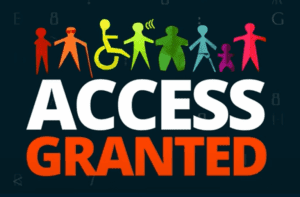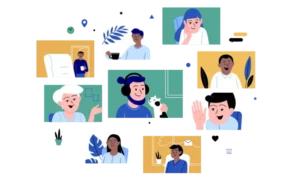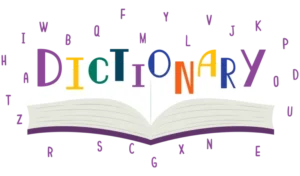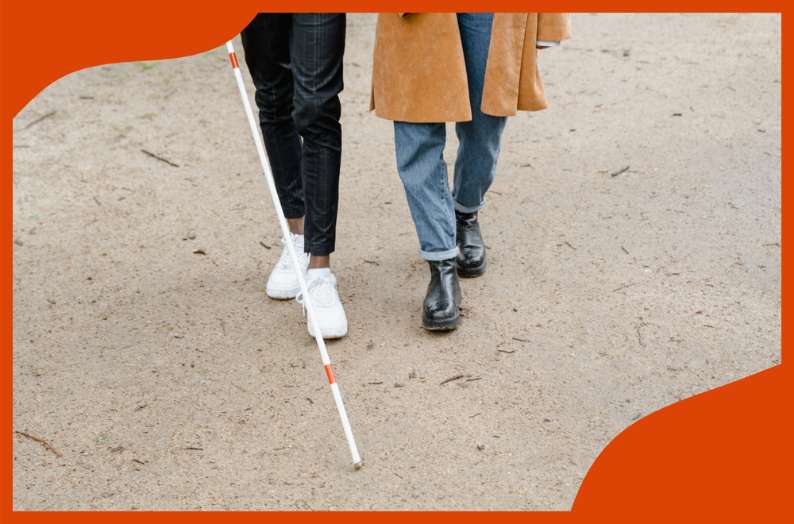Talking about sight loss can feel complicated, but the words we use matter. They shape how people think about blindness and low vision, and that understanding directly impacts accessibility. If you’ve ever wondered about the difference between low vision and blindness, then you’ve come to the right place. Many people aren’t sure how to define them, and that’s okay because we’re here to help make these terms more clear. Understanding the different types of sight loss is an important step toward creating more inclusive spaces and ensuring people get the right support.
The Difference Between Low Vision and Blindness
If you’ve ever asked yourself, “What’s the difference between low vision and blindness?” you’re not alone. These terms are sometimes used interchangeably, but they describe distinct experiences of sight loss. Understanding the difference helps clarify how vision can vary and what support may be most helpful.
Low Vision
Low vision means having significant sight loss that can’t be fully corrected with glasses, contacts, or medical treatment. People with low vision still have some usable sight but may struggle with activities like reading, recognizing faces, or moving through unfamiliar spaces.
Some common signs of low vision include blurry or patchy areas in central or peripheral vision, difficulty seeing clearly even with corrective lenses, and reduced contrast sensitivity, which makes it harder to distinguish objects from their background.
There are many assistive devices for sight loss that can help people with low vision maintain their independence. Magnifiers, high-contrast settings, and accessible technology are just a few of the tools that can make daily tasks easier.
Blindness
Blindness doesn’t always mean total lack of sight. Many people who are blind can still perceive light, shapes, or motion. A person is considered legally blind if their best corrected vision is 20/200 or worse, or if their visual field is significantly restricted. However, legal blindness is a specific classification that does not always mean complete loss of vision. Many legally blind individuals still have some usable sight and may identify as having both low vision and blindness.
Blindness exists on a spectrum, and in some cases, people who are legally blind qualify for state and federal resources under the category of blindness, even if they have remaining vision. Because their functional vision is minimal, people who are blind often rely on non-visual techniques, like screen readers, braille, and mobility aids, to navigate daily life independently. Learning how to use assistive devices effectively can help blind individuals move through their environment with confidence.
Language and Distinctions Matter
Understanding the difference between low vision and blindness is important because it helps ensure people get the right accommodations. Below is a list of reasons why understanding these distinctions is important.
- Access to Resources: The tools a person uses depend on their level of sight loss. Someone with low vision might benefit from magnification, while someone who is blind may rely on screen readers or braille.
- Workplace & Educational Support: Employers and schools can provide better accommodations when they recognize the varying needs of people with sight loss.
- Public Awareness & Advocacy: Using accurate language helps promote inclusive policies, break down stereotypes, and improve accessibility.
How to Talk About Sight Loss
Language matters and so do personal preferences. Many people prefer blind or low vision over visually impaired, since “impaired” can sound like a limitation rather than a characteristic. The best approach is to ask individuals how they identify and respect their choice.
Final Thoughts
Sight loss looks different for everyone, but with the right tools and support, people with low vision and blindness can lead full, independent lives. Understanding these distinctions and respecting language preferences is a step toward a more inclusive society.
For organizations looking to deepen their commitment to disability inclusion, Ablr offers Disability Inclusion Training to help professionals create more accessible workplaces. Beyond fostering a culture of inclusivity, prioritizing accessibility also means tapping into an often-overlooked talent pool. 26% of American adults live with a disability, representing a wealth of skills, perspectives, and potential that too many businesses miss out on. Click here to learn more about our Disability Inclusion Training.






